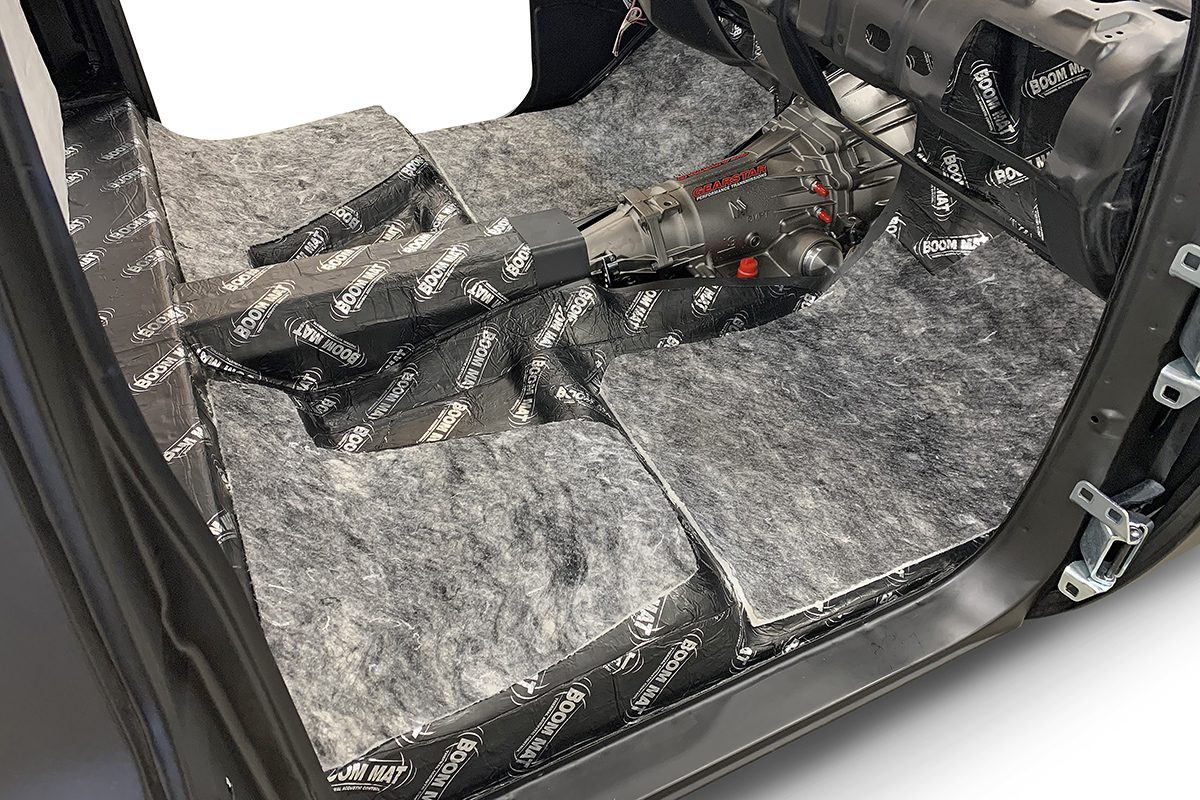Engine noise is undesirable vibrations and sounds emitted from the engine compartment during operation. There are a few key factors that contribute to engine noise transmission throughout the vehicle:
Vibration Transmission:
Engine vibrations travel through the various body panels and chassis components. Materials like sheet metal are excellent conductors of vibrations that can resonate loudly.
Resonating Body:
Thin, flat body panels act almost like speakers for engine vibrations. As vibrations hit the panels, they cause the material to resonate and amplify the noise even more. Areas like the firewall, inner fenders, and floor pans are common culprits.
Common Noise Sources:
Noisy components like the engine itself, exhaust, induction system, transmission, and drivetrain all produce vibrations. However, it’s the sound waves traveling through the vehicle that are heard as objectionable engine noise in the cabin.
Some engines are inherently louder than others, but proper Sound Deadening can help curb noise transmission throughout most vehicles. The following sections will explain how these materials work and how to install them.
How does sound deadening help reduce noise?
Sound deadening works by targeting the root causes of engine noise – vibration and resonance. When installed correctly, it can significantly reduce noise levels with minimal effort.
Sound Deadening Material.
Similar to Thermal Insulation Sheet, these sheets and tapes are made of dense, flexible compounds that help isolate vibrations. By dampening and absorbing vibrations closer to the source, there is less energy transferring through the vehicle.
Installing Sound Deadening.
When the panels vibrate from engine noise, the deadening material takes in some of the vibration wave’s energy. This weakens the vibration so there is less energy reaching other parts of the vehicle to rattle panels and resonate noises.
Muffles Noise Resonance.
Common problem areas like the firewall, inner fenders, floor pans, and trunk/cargo area are ideal for deadening sheets. Since these large, flat panels love to resonate noise, damping vibrations in these areas go a long way in reducing the overall noise level.
Choosing the right sound deadening material
With various sound deadening products available, it’s important to select materials formulated for maximum vibration damping. Here are some factors to consider:
Selecting Damping:
Look for sheets with a high damping rating between 20-30 dB. This indicates how well it can absorb vibrations and is proven most effective for noise reduction.
Sound Deadening Thickness:
1/8 inch or 3mm thickness is standard and provides good vibration blocking. 1/4 inch or thicker may be overkill except for noisiest vehicles or heaviest coverage areas.
Effectively Deaden Noise Vibrations:
Butyl rubber and vinyl sheets with high densities are most common. Avoid cheap foam or butyl foam rolls lacking density for absorption. Mass loaded vinyl (MLV) is also very effective but higher price.
Preparing Your Vehicle for a Sound Deadening Install
Inspect surfaces closely under bright lights: Check for pre-existing damage, rust that needs treatment, or spots missed in washing.
Repair Minor Metal:
Use body filler to patch small dings, dents or cracks then sand smooth.
Remove door panels:
Exposing more interior surfaces allows complete coverage if desired.
Cover any exposed:
Electrical tape protects against accidental adhesion while working.
Mark installation references:
Outline panel shapes, seams, or other points of reference with masking tape prior to deadening.
Pieces Out of The Way:
Carpet, felt pads, trim moldings, etc. Keep debris and overspray off these.
Adjacent Surfaces:
Newspaper under doors prevents accidentally bonding the doors together.
Remove Residues:
If utilizing masking or painter’s tape, ensure all residue is removed prior to deadening application.
Additional tips for noise reduction
Aside from installing sound deadening sheets, some additional techniques further cut vibration pathways:
Sealing Body Panel:
Apply adhesive seam sealer to close openings between panels like doors, hoods, trunks and convertible top channels.
Adding absorptive insulation:
Thick, fibrous insulation padding on floor pans and inside doors muffles reverberations before they reach carpets.
Trunk/Cargo Area:
This large cavity is particularly prone to drum-like resonances. Heavily deadening the trunk floor, walls and lid makes a notable difference.
Installing door bushings/seals:
Worn out bushings in door hinges or lacking seals around window frames allow unwanted noises into the cabin.
Isolating noisy components:
Vibrations from motor/transmission mounts can travel into the vehicle. Using polyurethane-strengthened units helps block this path.
Mufflers and exhaust upgrades:
A FREE-FLOWING performance exhaust or high-flow muffler swap can reduce exhaust resonance at start-up or under acceleration.
Balancing driving habits:
Overly forceful accelerations or high RPMs excite more cabin and road noises than smooth, even throttle modulation.
Read More Articles: https://usidesk.co.uk/

